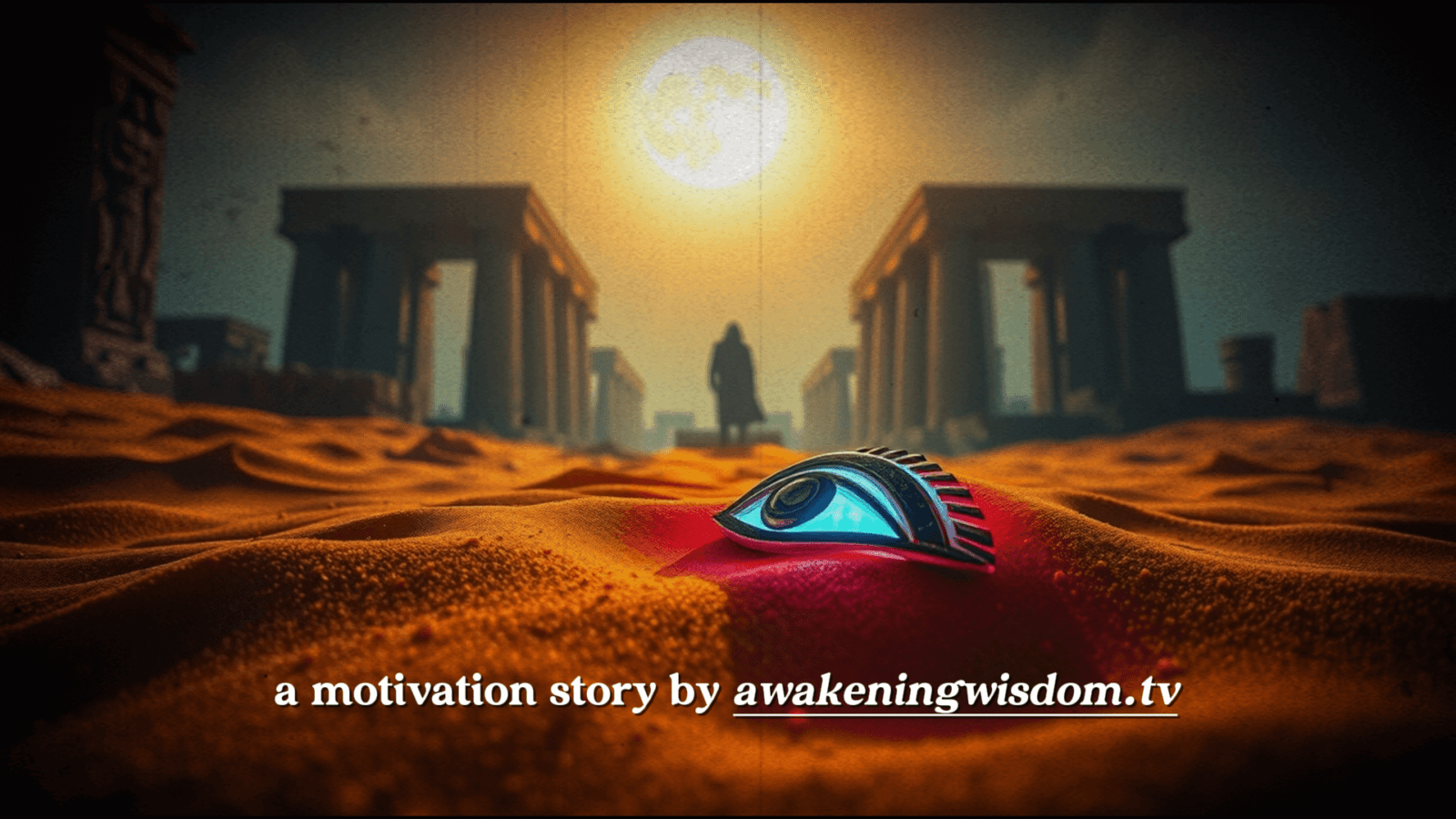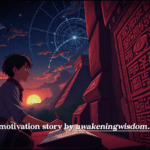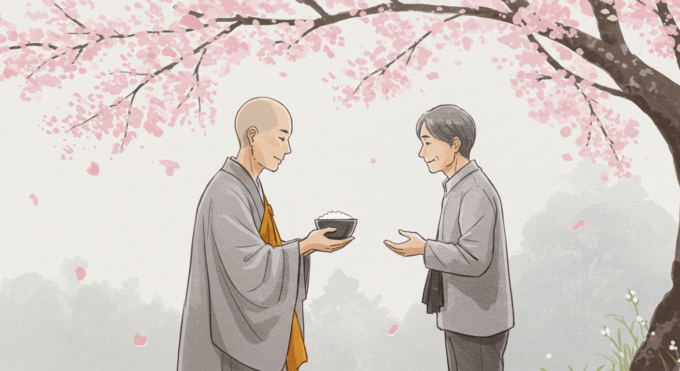Ancient Egyptian amulets were more than just decorations, they held deep spiritual meanings and mystical powers. Discover the story of a lost amulet and the secrets it revealed.
The Merchant’s Discovery
In the bustling streets of Thebes, where merchants called out their wares and priests whispered prayers to the gods, there lived a humble trader named Nefari.
Unlike other merchants who sought gold or spices, Nefari was drawn to ancient relics—objects with history, power, and mystery.
One day, while exploring the ruins of an old temple, he stumbled upon something extraordinary.
Buried beneath the sand, hidden beneath the weight of time, lay a small amulet.
It was shaped like the Eye of Horus, its golden surface worn but still glimmering under the desert sun.
Something about it felt different—as if it was not just an ornament, but something alive.
Nefari clutched it in his hand and whispered, “What secrets do you hold?”
Little did he know, the amulet would change his life forever.
The Priest’s Warning
Eager to learn more, Nefari took the amulet to Anhotep, a respected temple priest known for his knowledge of sacred artifacts.
The old priest examined the piece carefully. His eyes widened.
“This is no ordinary amulet,” he murmured.
“This was crafted for protection. It belonged to someone of great importance.”
“Protection from what?” Nefari asked.
Anhotep’s expression darkened.
“There are many kinds of protection, my son. Some shield the body. Others guard the soul. And some… keep dangerous forces at bay.”
Nefari felt a chill run down his spine.
“What does the Eye of Horus truly mean?” he asked.
Anhotep sighed and led him to the temple’s sacred hall.
“Let me tell you the truth about Egyptian amulets and the power they hold.”
The Power of Egyptian Amulets
Anhotep gestured to the vast carvings on the temple walls, showing different amulets used by the ancients.
“Amulets are more than decorations,” he said.
“They are infused with the power of the gods, carrying protection, wisdom, and even magic.”
Nefari listened as Anhotep revealed the hidden meanings behind the most powerful Egyptian amulets.
1. The Eye of Horus (Wedjat) – Protection & Healing
- Symbol of divine protection, health, and restoration.
- Often placed in tombs to guide the dead safely into the afterlife.
“This amulet,” Anhotep said, holding up Nefari’s find, “was likely given to a Pharaoh or warrior to shield them from harm.”
Nefari’s heart pounded. “Then why was it buried and forgotten?”
Anhotep only smiled. “Not all protection is for the living.”
2. The Ankh – The Key of Life
- Represents eternal life and divine energy.
- Worn by priests and Pharaohs as a sign of immortality and power.
“The Ankh was carried by gods in hieroglyphs, a reminder that life does not end with death.”
3. The Scarab – Transformation & Rebirth
- Symbol of renewal and the rising sun.
- Often placed in tombs to ensure safe passage to the afterlife.
“The scarab beetle rolls its egg in the sand, giving the illusion of rebirth from nothing. The Egyptians believed it mirrored the cycle of life itself.”
4. The Djed Pillar – Strength & Stability
- Associated with Osiris, the god of the underworld.
- Worn to bring endurance, strength, and resilience.
“A king with a Djed amulet was said to rule with the wisdom and strength of Osiris himself.”
The Curse of the Forgotten Amulet
As Nefari absorbed this knowledge, Anhotep grew serious.
“Tell me, merchant—where did you find this amulet?”
Nefari hesitated. “It was buried near an abandoned temple, hidden beneath the sands.”
Anhotep’s eyes darkened.
“Then you must return it.”
Nefari’s pulse quickened. “Why?”
Anhotep touched the amulet lightly and whispered, “Not all amulets are meant to be worn.”
He turned and pointed to a carved inscription on the temple wall.
It depicted a Pharaoh standing before Anubis, the god of the dead.
In his hands was the Eye of Horus, glowing with power.
“This amulet was likely placed to keep something sealed,” Anhotep said.
“By taking it, you may have disturbed something best left undisturbed.”
Nefari’s throat went dry.
“A curse?” he whispered.
The priest nodded. “If it was meant to protect, then removing it has undone that protection. You must return it before it is too late.”
The Journey Back
That night, beneath a sky filled with a thousand stars, Nefari made his way back to the ruined temple.
The wind howled through the empty columns.
The moon cast eerie shadows on the stone walls.
With trembling hands, he placed the Eye of Horus amulet back into the sand.
For a moment, there was silence.
Then, a whisper in the wind.
Not words, but a feeling—peace, as if something had been restored.
As Nefari turned to leave, he glanced back one last time.
And for just a moment, he could have sworn he saw a figure standing in the moonlight—a guardian spirit, watching over the temple once more.
The Lesson of the Amulets
The next morning, Nefari returned to Anhotep and told him everything.
The old priest nodded.
“You have learned an important truth, my son,” he said.
“Power is not meant to be taken lightly. Egyptian amulets were not just symbols—they were keys to the unseen world, protecting, guiding, and sometimes… sealing.”
Nefari never looked at amulets the same way again.
And from that day forward, he no longer sought treasures to possess, but to understand.
Because now, he knew that some things are not meant to be owned—but honored.
How Egyptian Amulets Can Teach Us Today
Even today, Egyptian amulets hold a powerful message:
✅ Protection – Guard what is valuable, whether it’s your heart, your dreams, or your faith.
✅ Wisdom – Seek knowledge before claiming something as your own.
✅ Respect for the Past – Some things are meant to be remembered, not disturbed.
Like Nefari, we must learn that not everything should be taken—but everything can be understood.









Leave a comment